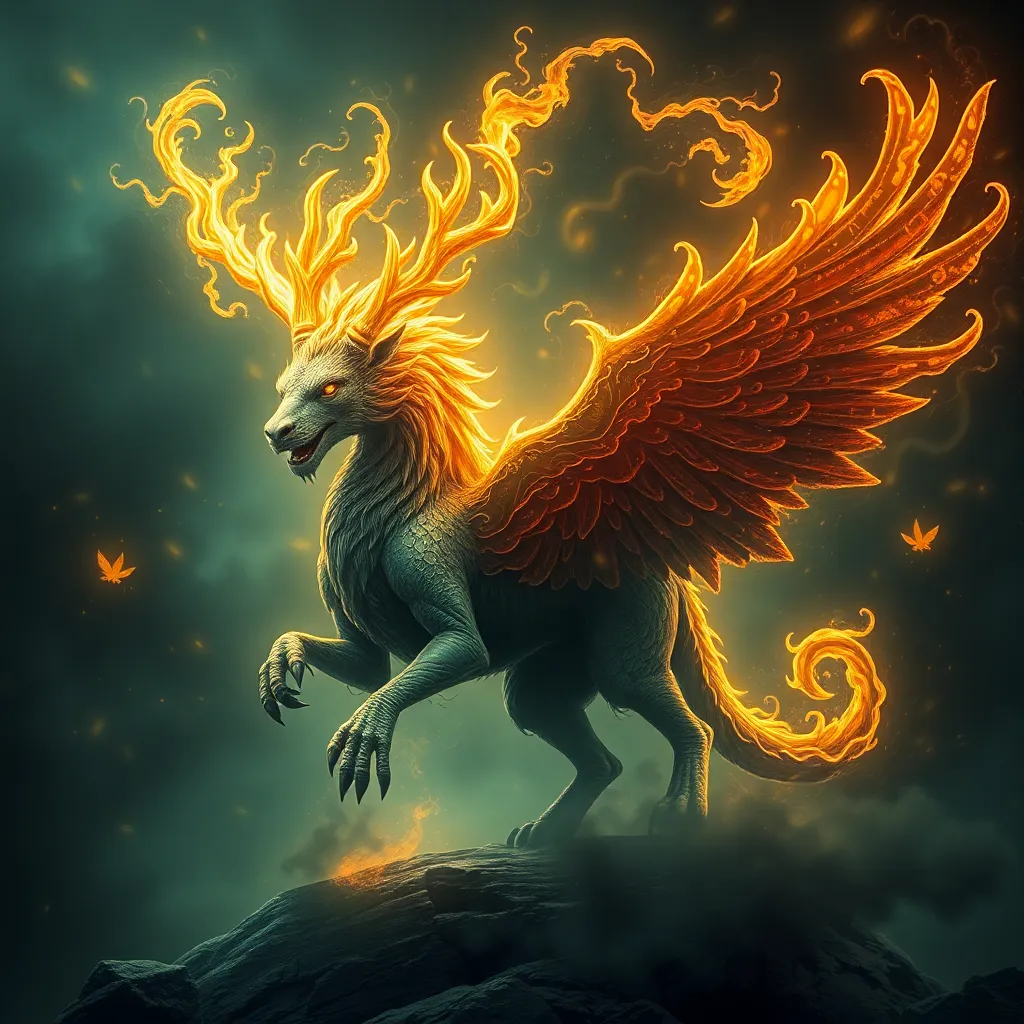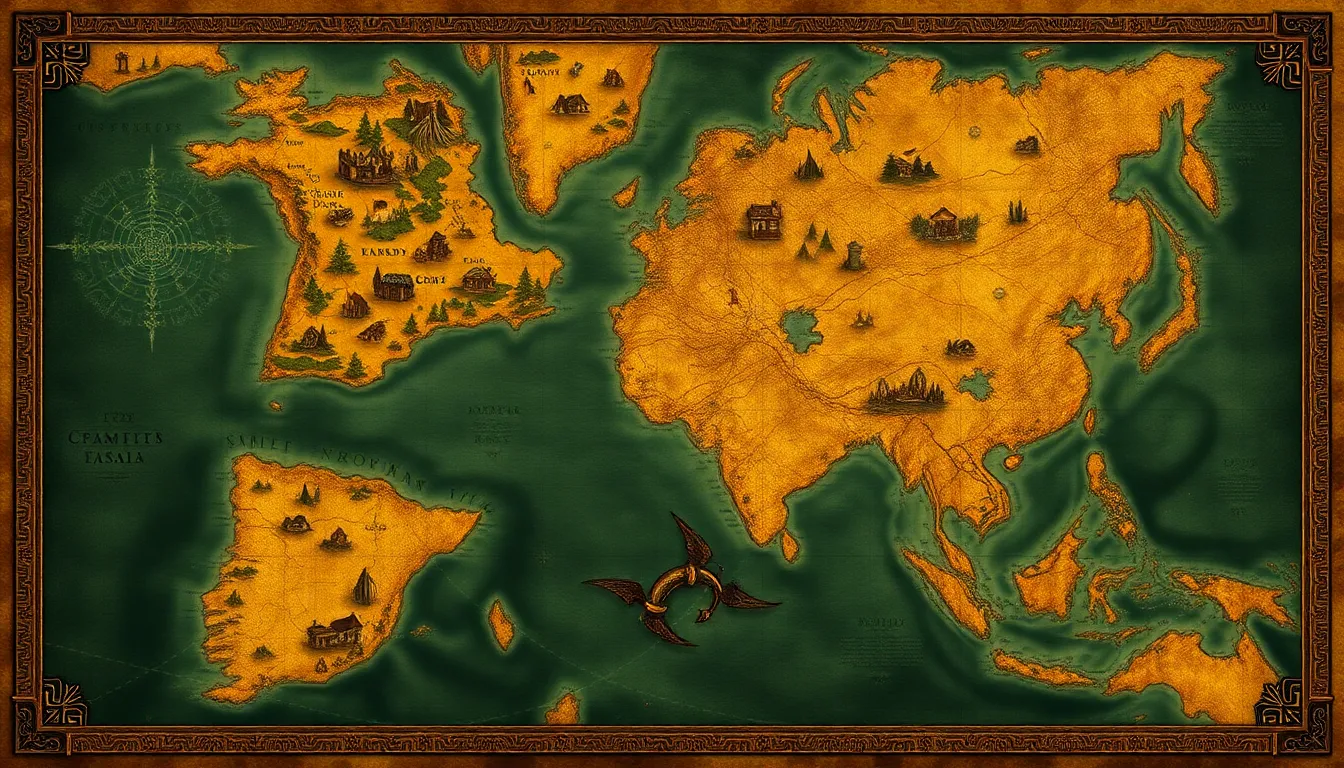The World Tree as a Symbol of Connection: Bridging Different Mythological Traditions
I. Introduction
The concept of the World Tree is a powerful and pervasive symbol found in various mythologies around the globe. It represents the interconnectedness of life, the cosmos, and the spiritual realms. The World Tree serves as a metaphorical bridge linking different worlds, cultures, and ideas, encapsulating the essence of existence itself.
Symbols hold immense importance in mythology as they convey complex ideas, beliefs, and values. The World Tree, in particular, symbolizes growth, connection, and the cyclical nature of life, resonating deeply within human consciousness. This article aims to explore the significance of the World Tree across different mythological traditions, examining its various representations and the common themes that emerge.
II. The World Tree in Norse Mythology
In Norse mythology, Yggdrasil is the majestic World Tree that stands at the center of the cosmos, connecting the Nine Realms. This immense ash tree is not only a physical structure but also a spiritual symbol embodying the universe’s interconnectedness.
Yggdrasil links three primary realms:
- Asgard: The realm of the gods.
- Midgard: The world of humanity.
- Hel: The realm of the dead.
Each of these realms is connected through the roots and branches of Yggdrasil, which signifies the bond between life, death, and the divine. The tree’s significance is further emphasized by its role in maintaining the balance of the cosmos and being a source of wisdom and knowledge.
In Norse culture, Yggdrasil represents several symbolic meanings:
- The cycle of life and death.
- The interconnectedness of all beings.
- The pursuit of knowledge and enlightenment.
III. The Cosmic Tree in Hinduism
The Ashvattha tree, or sacred fig, is a prominent symbol in Hindu philosophy, particularly in the Bhagavad Gita. It is depicted as a cosmic tree whose roots are above and branches below, representing the nature of reality and the cycle of life.
In Hinduism, the Ashvattha tree symbolizes:
- Interconnectedness: The tree’s branches signify the myriad paths of existence, while its roots represent the divine source of all life.
- The cycle of life: The tree embodies the concepts of birth, death, and rebirth, emphasizing the eternal nature of the soul.
When compared to the Norse concept of Yggdrasil, both trees symbolize interconnectedness but differ in their cultural contexts. Yggdrasil is more focused on the balance of realms and the significance of fate, while the Ashvattha emphasizes spiritual growth and the eternal cycle of existence.
IV. The World Tree in Native American Traditions
Native American cultures offer a diverse range of interpretations of the World Tree, often referred to as the Tree of Life. Each tribe has its unique perspective, but common themes emerge across these traditions.
For many Native American tribes, the Tree of Life symbolizes:
- Sustenance: It serves as a source of food, shelter, and materials for tools.
- Spirituality: The tree is revered as a sacred entity, connecting the physical and spiritual worlds.
The Tree of Life also represents the connection to nature and the cosmos, emphasizing the belief that all living things are interconnected. This reflects a profound respect for the natural world and the understanding that humanity is part of a larger ecological system.
V. The World Tree in Asian Mythologies
Asian mythologies also feature the World Tree in various forms, with notable examples including the Bodhi Tree in Buddhism and Kunlun Mountain in Chinese mythology.
The Bodhi Tree, under which Siddhartha Gautama attained enlightenment, symbolizes:
- Enlightenment: The tree represents the path to spiritual awakening and the realization of truth.
- Connection: It signifies the interconnectedness of all beings, as enlightenment is accessible to everyone.
In Chinese mythology, Kunlun Mountain is often associated with the World Tree, representing a sacred place where heaven and earth meet. This parallels the themes of enlightenment and connection found in other traditions, emphasizing the universal quest for knowledge and understanding.
VI. The Role of the World Tree in Modern Interpretations
In contemporary spirituality, the World Tree continues to resonate as a symbol of connection and unity. It is often embraced as a representation of personal growth and ecological awareness.
In popular culture and literature, the World Tree appears in various forms:
- Fantasy novels, such as J.R.R. Tolkien’s works, depict trees as central to the narrative and the characters’ journeys.
- Movies and video games often feature World Trees as symbols of power and wisdom.
Moreover, the World Tree has become a powerful symbol in environmental movements, representing the importance of preserving our planet and recognizing our interconnectedness with nature.
VII. Comparative Analysis of World Tree Myths
Across different cultures, several common themes emerge regarding the World Tree:
- Interconnectedness: The tree symbolizes the connection between various realms, life forms, and the cosmos.
- Cyclical nature of life: Many traditions highlight the tree’s representation of birth, death, and rebirth.
- Spiritual significance: The World Tree often serves as a bridge between the physical and spiritual worlds.
While there are similarities, differences in symbolism and interpretation also exist. For example, Yggdrasil’s focus on fate contrasts with the Hindu emphasis on spiritual growth. Despite these differences, the World Tree emerges as a unifying archetype in human storytelling, reflecting our shared experiences and aspirations.
VIII. Conclusion
The World Tree serves as a profound symbol of connection, bridging diverse mythological traditions and highlighting the interconnectedness of life. From Yggdrasil in Norse mythology to the Ashvattha in Hinduism and the Tree of Life in Native American cultures, each representation offers unique insights into human existence and spirituality.
The enduring relevance of the World Tree symbol lies in its ability to resonate with contemporary themes of unity, environmentalism, and personal growth. As we explore these mythologies, we are reminded of the importance of appreciating the interconnectedness of our cultural narratives and the wisdom they impart.




